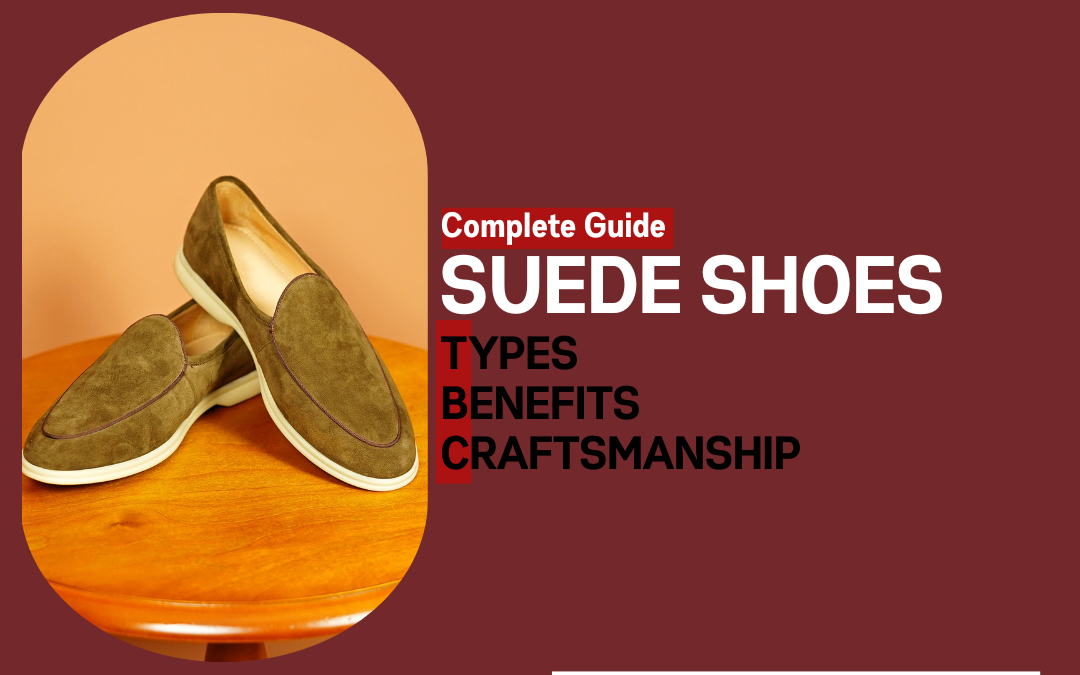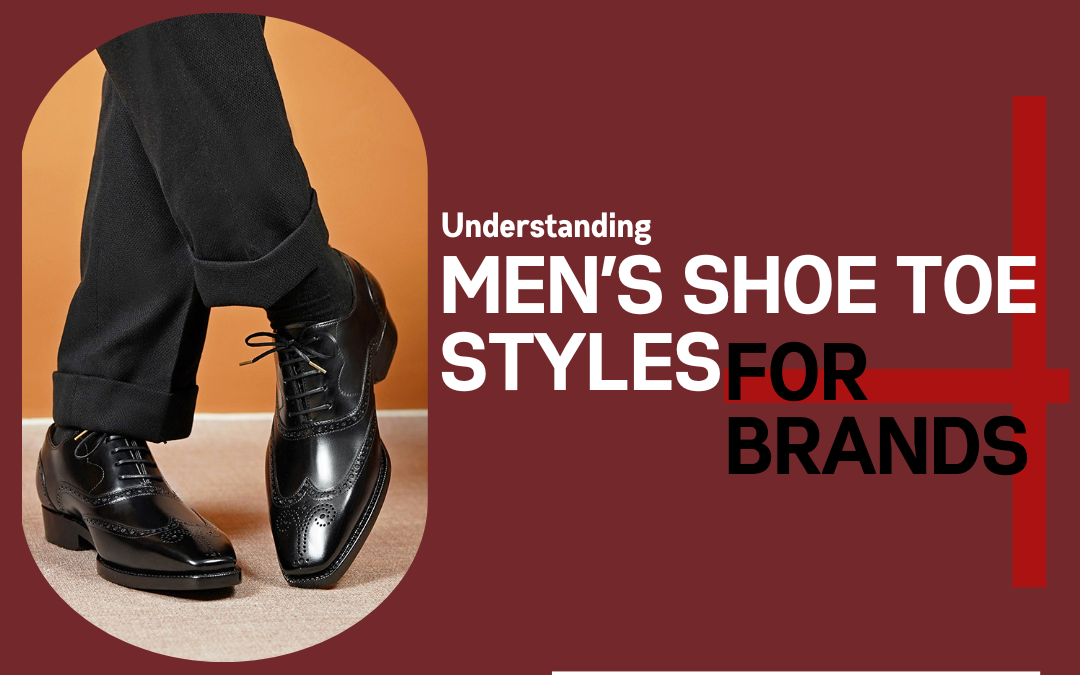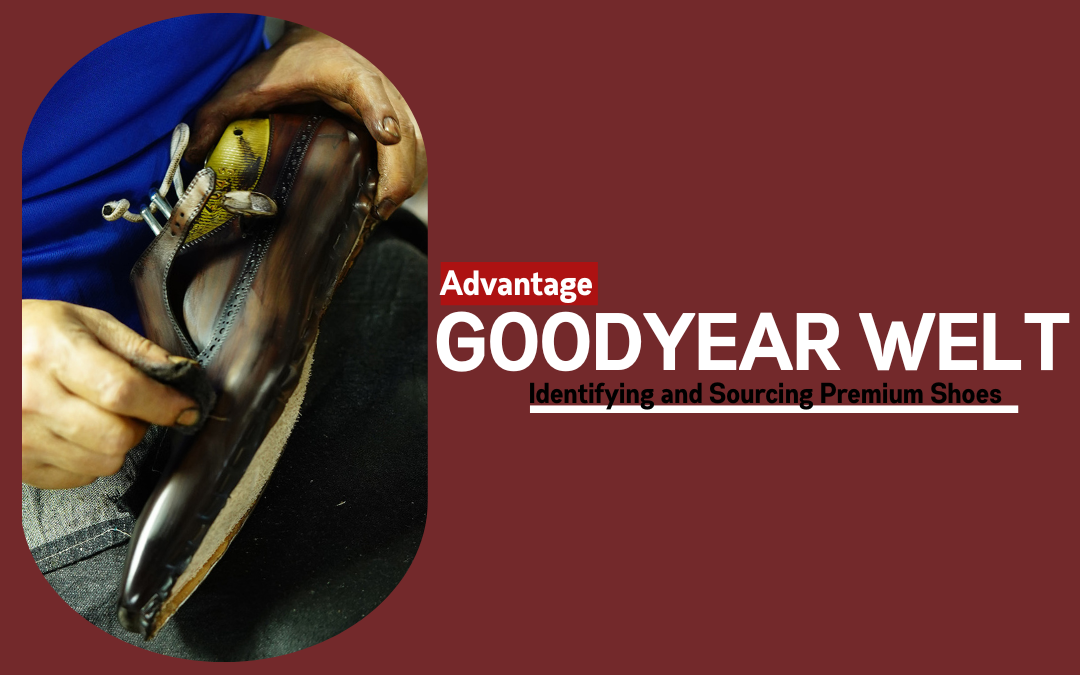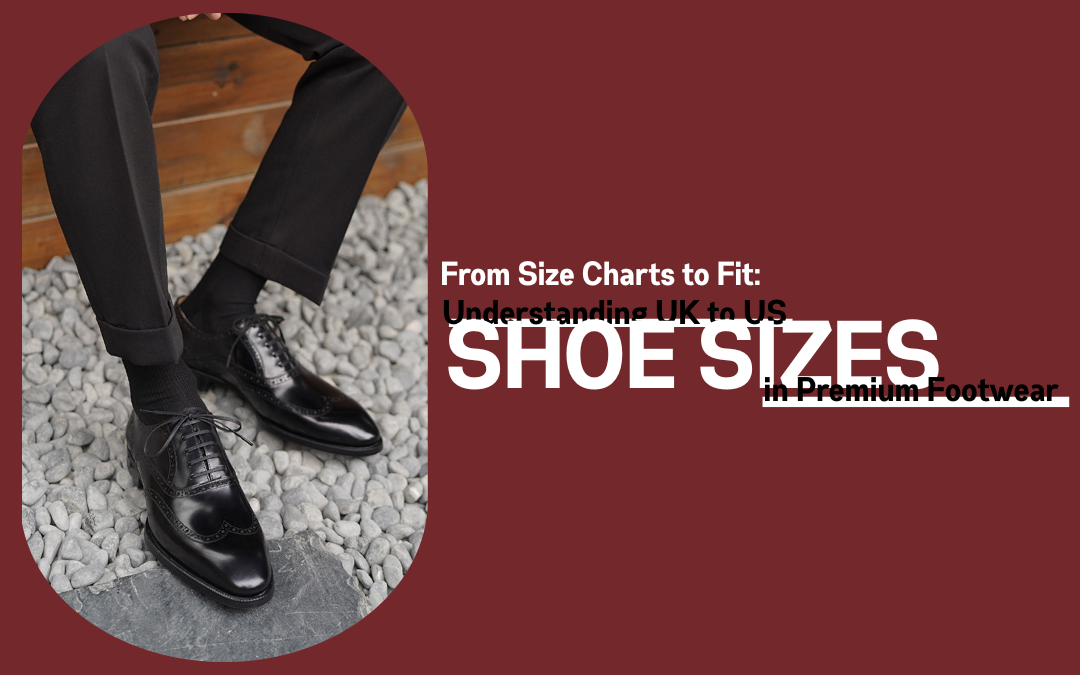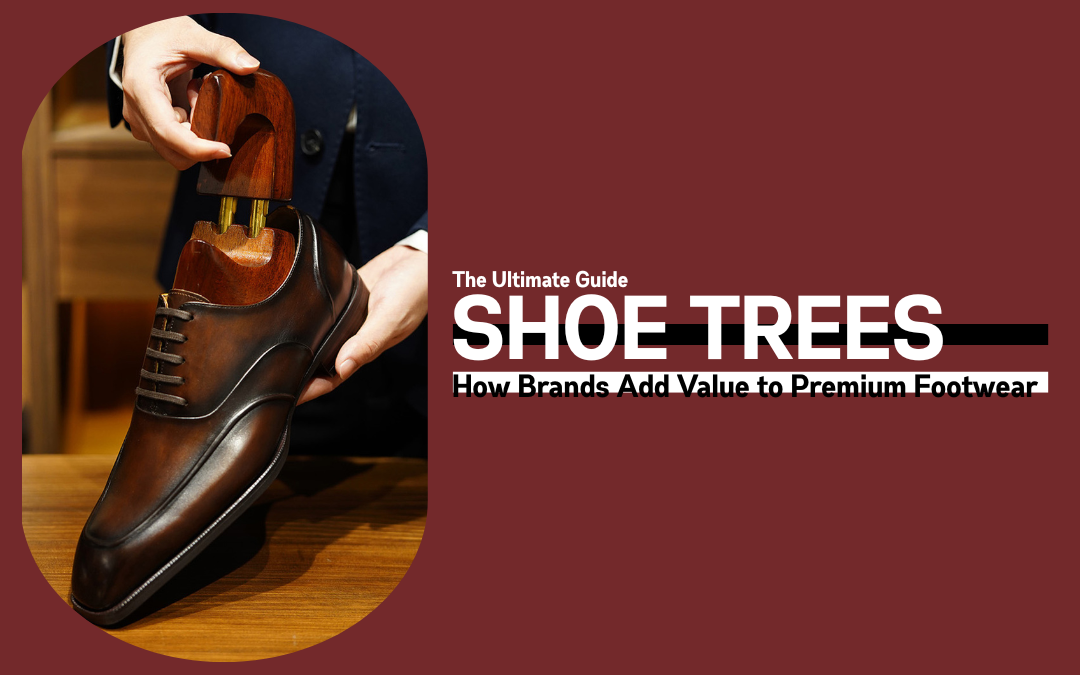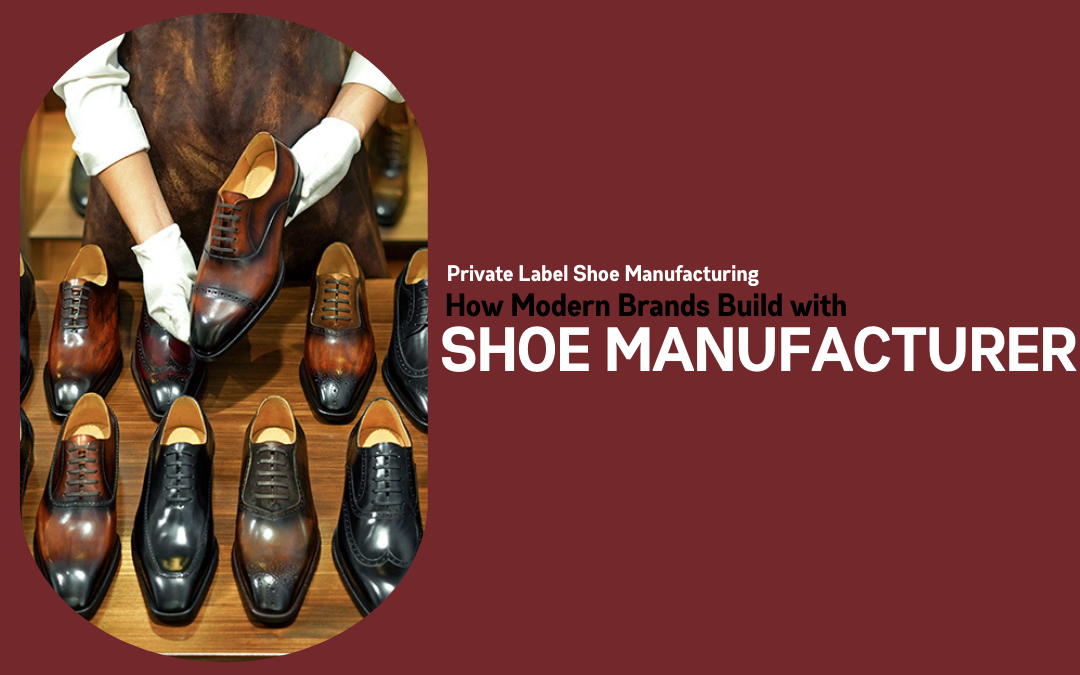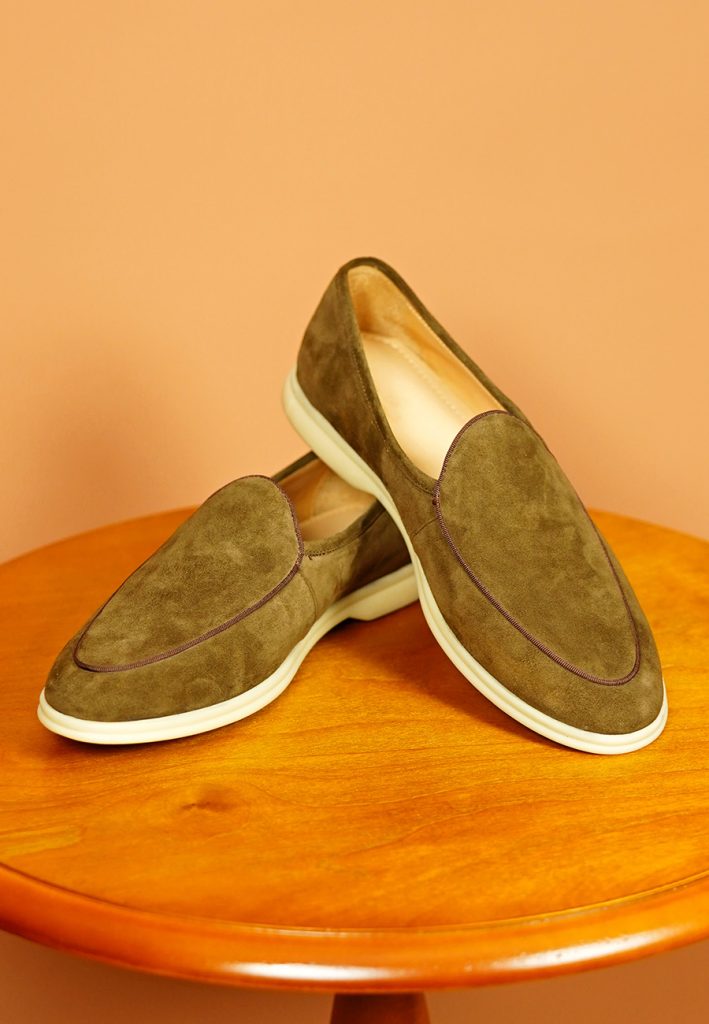
Suede shoes have always been a classic choice in men’s fashion. Known for its soft texture and elegant look, suede brings a timeless appeal that fits both casual and formal styles.
Unlike regular leather, suede offers a unique finish that feels smooth to the touch and adds depth to any outfit.
In modern footwear, suede stands out because it balances durability, comfort, and style.
Whether it’s in dress shoes, boots, or loafers, suede gives men a refined option that works across different occasions.
For beginners, suede may seem delicate, but with proper care, it is a long-lasting and versatile material.
For wholesale and private-label buyers, suede provides a chance to create collections that stand apart.
Its luxurious look, combined with the ability to be crafted in various colors and shoe styles, makes suede an excellent choice for brands that want to offer customers something both fashionable and distinctive.
Understanding Suede Leather
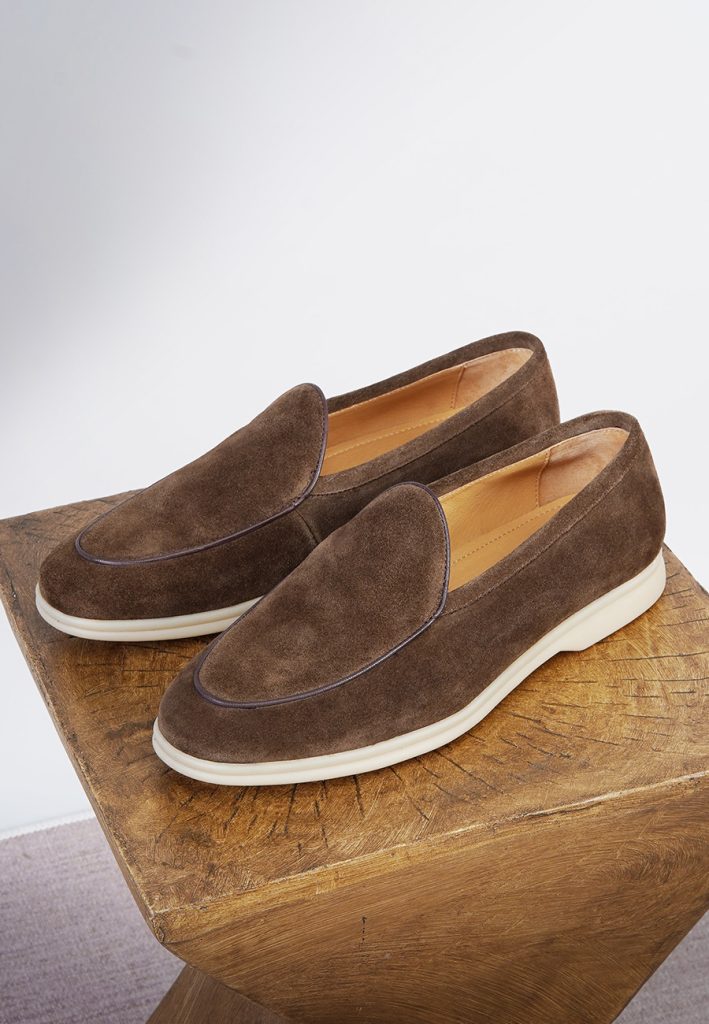
What is Suede?
Suede is a type of leather that comes from the underside of animal hides, usually cow, calf, or goat. Unlike smooth leather, suede has a soft, velvety surface that feels nice to touch. This texture makes suede popular in shoes, jackets, and accessories.
One of the biggest advantages of suede is its natural breathability. This means your feet won’t feel too hot or trapped when wearing suede shoes.
While it may look delicate, suede is actually strong enough for everyday use—if properly cared for.
| Example: Think about the difference between a shiny leather dress shoe and a soft suede loafer. The leather shoe feels polished and formal, while the suede loafer looks stylish yet relaxed. |
Types of Suede Commonly Used in Footwear
Not all suede is the same. Different types of suede are used in shoe making, and each one has its own qualities, price range, and best uses.
Knowing the difference helps beginners and buyers understand why one pair of suede shoes may cost more than another, or why some hold up better in daily wear.
Below are the three most common types of suede you’ll see in footwear.
Split Suede
Split suede comes from the inner layers of the hide after the top grain has been removed.
Because it uses the lower part of the hide, split suede is more affordable to produce, which makes it a popular choice for budget-friendly shoes.
The texture is still soft and velvety, but it doesn’t have the same strength or depth as higher-quality suedes.
This type of suede is versatile and casual, making it perfect for everyday shoes that don’t require a luxury finish.
It’s commonly found in items like desert boots, sneakers, or casual loafers. However, since split suede is thinner, it may wear out faster if not cared for properly.
Full-Grain Suede
Full-grain suede is made from the top section of the hide, but it is lightly sanded to create the soft surface that suede is known for.
Because it comes from the stronger, outer part of the hide, it is more durable and has a richer, higher-quality look compared to split suede.
Shoes made from full-grain suede are usually found in the premium market. They are more resistant to wear, hold their shape better, and often age beautifully with the right care.
This type of suede is a favorite for dress shoes, loafers, and luxury boots, where both appearance and performance matter.
Waxed or Treated Suede
One common concern with suede shoes is their sensitivity to water and stains. To solve this, some suede is treated with wax or protective coatings.
This creates waxed or treated suede, which maintains the soft texture of suede while gaining extra resistance to moisture, dirt, and weather.
This makes treated suede ideal for shoes designed to handle tougher environments. You’ll often see it used in chukka boots, hiking boots, or outdoor casual shoes where durability and practicality are just as important as style.
Waxed suede allows people to enjoy the fashionable look of suede without worrying too much about rain or muddy conditions.
Comparison Chart: Types of Suede for Footwear
| Type of Suede | Price Level | Durability | Best For | Example Shoes |
| Split Suede | Low | Moderate | Everyday casual wear | Desert boots, sneakers |
| Full-Grain Suede | High | High | Formal & semi-formal styles | Loafers, dress shoes |
| Waxed/Treated Suede | Medium-High | Very High | Outdoor & all-weather conditions | Hiking boots, chukka boots |
The Advantages of Suede Shoes
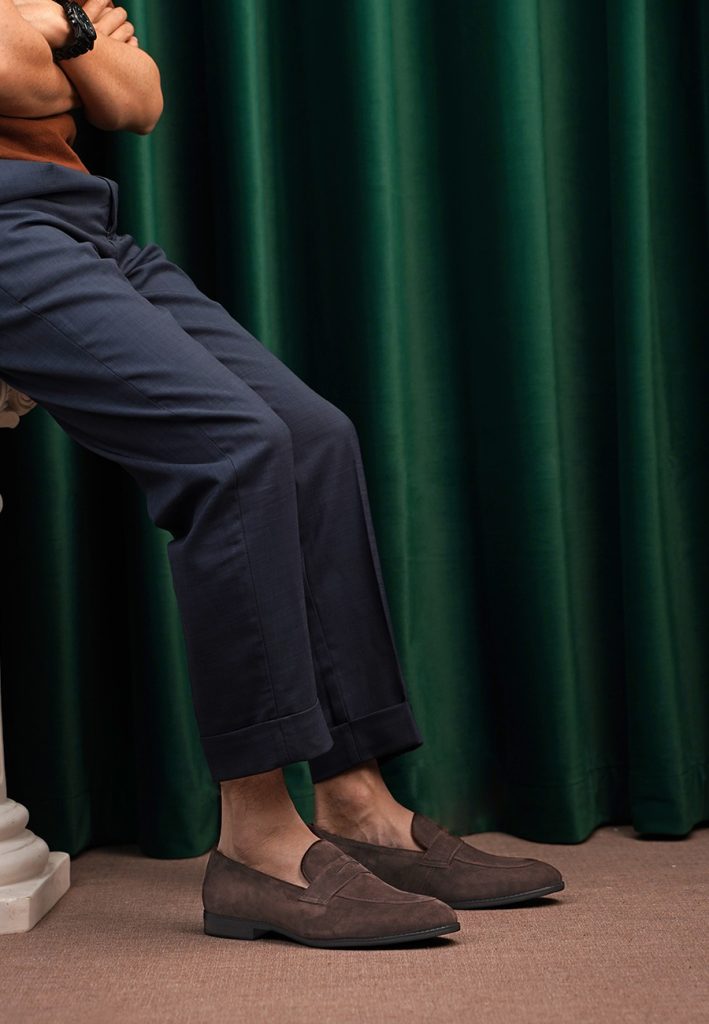
Durability and Comfort
Many people think suede is fragile, but when it’s properly treated and cared for, it can be surprisingly durable.
Protective sprays and conditioners can make suede resistant to water, stains, and everyday wear. This means a good pair of suede shoes can last for years, even with regular use.
Beyond durability, suede is also known for its comfort. The soft and flexible structure of the material allows it to mold naturally to the shape of your foot.
Over time, suede shoes feel almost custom-fitted, making them especially comfortable for long hours of wear.
For example, suede loafers or slip-on moccasins often feel more relaxed on the feet compared to stiff leather shoes.
Style Versatility
One of suede’s biggest strengths is its versatility in style. Unlike polished leather, which can sometimes look too formal or rigid, suede carries a softer, more balanced appearance.
This makes it suitable for a wide range of outfits and occasions.
For formal or semi-formal settings, suede loafers or derbies can complement suits or smart-casual attire with a touch of sophistication.
On the other hand, suede chukka boots or desert boots are perfect for casual wear, adding character without feeling overdressed.
Suede’s ability to look stylish in both business settings and weekend outings makes it a favorite material for men’s footwear collections.
B2B Value for Brands
For wholesale buyers and private-label brands, suede offers a major advantage: it allows collections to stand out from the standard calf leather lines.
Many brands focus heavily on polished leather shoes, so adding suede to a collection brings variety and a fresh appeal.
Modern consumers are drawn to suede because it blends elegance with comfort—something today’s buyers are actively looking for.
For example, a brand that includes suede loafers in rich colors like navy or burgundy can attract younger professionals who want shoes that feel stylish yet practical.
Suede also works well in seasonal collections, such as autumn or winter lines, where its texture pairs beautifully with wool and tweed fabrics.
Craftsmanship in Suede Footwear: What Sets Premium Apart
Construction Methods
The way suede shoes are built directly affects their durability and performance. Premium brands often use the Goodyear welt construction, a time-tested method where the upper, welt, and sole are carefully stitched together.
This technique not only makes shoes stronger but also allows them to be resoled, extending their lifespan.
Another key element is precision stitching. Suede can fray if not handled properly, so experienced shoemakers use tight, even stitches to secure the material without damaging its delicate fibers.
For example, a pair of Goodyear welted suede derbies will stay firm and neat much longer compared to mass-produced glued shoes.
Comparison: Common Construction in Suede Shoes
| Construction Method | Durability | Comfort | Resole-Friendly | Typical Price Range |
| Glued / Cemented Sole | Low | Medium | No | Budget-friendly |
| Blake Stitch | Medium | High | Limited | Mid-range |
| Goodyear Welt | Very High | High | Yes | Premium |
Finishing Techniques
Finishing is where suede shoes gain their character and uniqueness. Premium shoemakers often apply patina coloring, a hand-finishing method that creates depth, rich tones, and a one-of-a-kind look.
While patina on smooth leather is more common, applying it to suede is considered a niche offering that adds exclusivity.
In addition, premium suede footwear often comes with protective coatings that improve resistance against water and stains.
For example, treated suede loafers can be worn in unpredictable weather without losing their shape or texture.
This adaptability makes them suitable for global markets, from rainy Europe to warmer Asian climates.
| Feature | Standard Suede | Premium Suede |
| Basic Dye Colors | ✔️ | ✔️ |
| Hand-Applied Patina | ❌ | ✔️ |
| Waterproof / Weather Protection | ❌ | ✔️ |
| Exclusive Market Appeal | ❌ | ✔️ |
Hengxin’s Manufacturing Strength
For wholesale and private-label buyers, craftsmanship also depends on the manufacturer’s ability to balance quality with scale. Hengxin has developed a strong reputation for its expertise in suede shoe production, combining traditional techniques with modern efficiency.
This means brands can access premium detailing—such as Goodyear welt construction, patina finishing, and weather-resistant coatings—at scale, without sacrificing quality.
For example, a private-label brand looking to launch a fall/winter collection of suede boots can rely on Hengxin to deliver durable, stylish, and well-finished products tailored to market demands.
With the ability to produce both classic suede loafers for formal lines and treated suede chukkas for casual collections, Hengxin offers B2B clients a flexible solution that meets modern consumer expectations for sophistication, comfort, and durability.
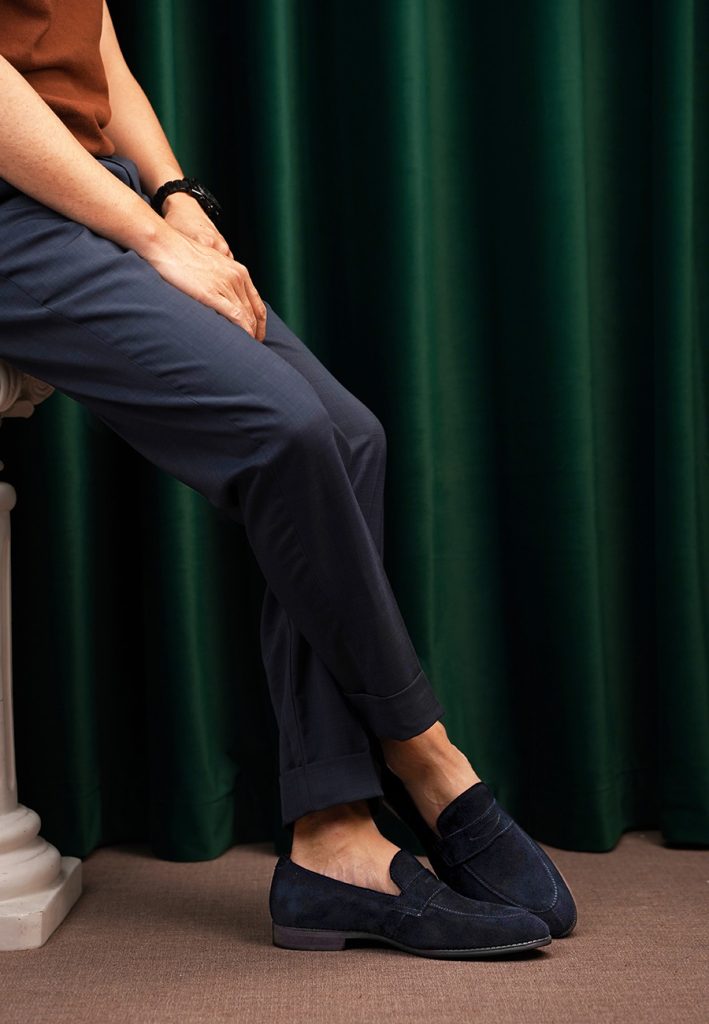
Conclusion: Suede as a Smart Investment for Brands
Suede shoes are more than just stylish; they represent a smart balance of durability, comfort, and versatility.
With the right care and craftsmanship, suede footwear can last for years while offering a unique texture and look that stands out from smooth leather.
For consumers, suede provides flexibility, easily fitting into both formal wardrobes and casual lifestyles.
For wholesale and private-label brands, investing in suede footwear means adding variety and sophistication to their product lines.
Modern buyers are no longer just looking for traditional leather shoes, they want materials that feel premium yet comfortable. By offering suede, brands can attract customers who value both elegance and wearability.
This is where Hengxin’s expertise makes the difference. With proven skill in suede shoe production, Hengxin combines craftsmanship, premium detailing, and scalable manufacturing to deliver collections that meet global market demands.
Whether it’s classic suede loafers for a formal line or weather-treated suede boots for casual collections, Hengxin helps brands strengthen their portfolios with footwear that consumers will value and trust.
FAQ
- What are suede shoes, and how are they made?
Suede shoes are made from the underside of animal hides, usually cow, calf, or goat. The leather is sanded to create a soft, velvety texture. Shoemakers then cut, stitch, and finish the suede to create shoes like loafers, boots, or derbies.
- What types of suede are used in men’s dress shoes?
The most common types are:
- Split suede – affordable and casual.
- Full-grain suede – durable and premium, often used in loafers or oxfords.
- Waxed or treated suede – coated for water resistance, used in chukkas or outdoor shoes.
- Are suede shoes durable for daily wear?
Yes, suede shoes can be durable if properly cared for. Protective sprays and regular cleaning keep them resistant to stains and light moisture. High-quality suede, like full-grain, holds up especially well for daily use.
- How do suede shoes compare to smooth leather shoes in longevity?
Smooth leather shoes generally last longer because they resist water and scuffs better. However, with proper care and protective treatments, suede shoes can last many years while offering more comfort and a softer style.
- Can Goodyear welt construction be applied to suede shoes?
Yes. Premium suede shoes often use Goodyear welt construction. This method improves durability, prevents fraying, and allows the shoes to be resoled, giving them a much longer lifespan.

